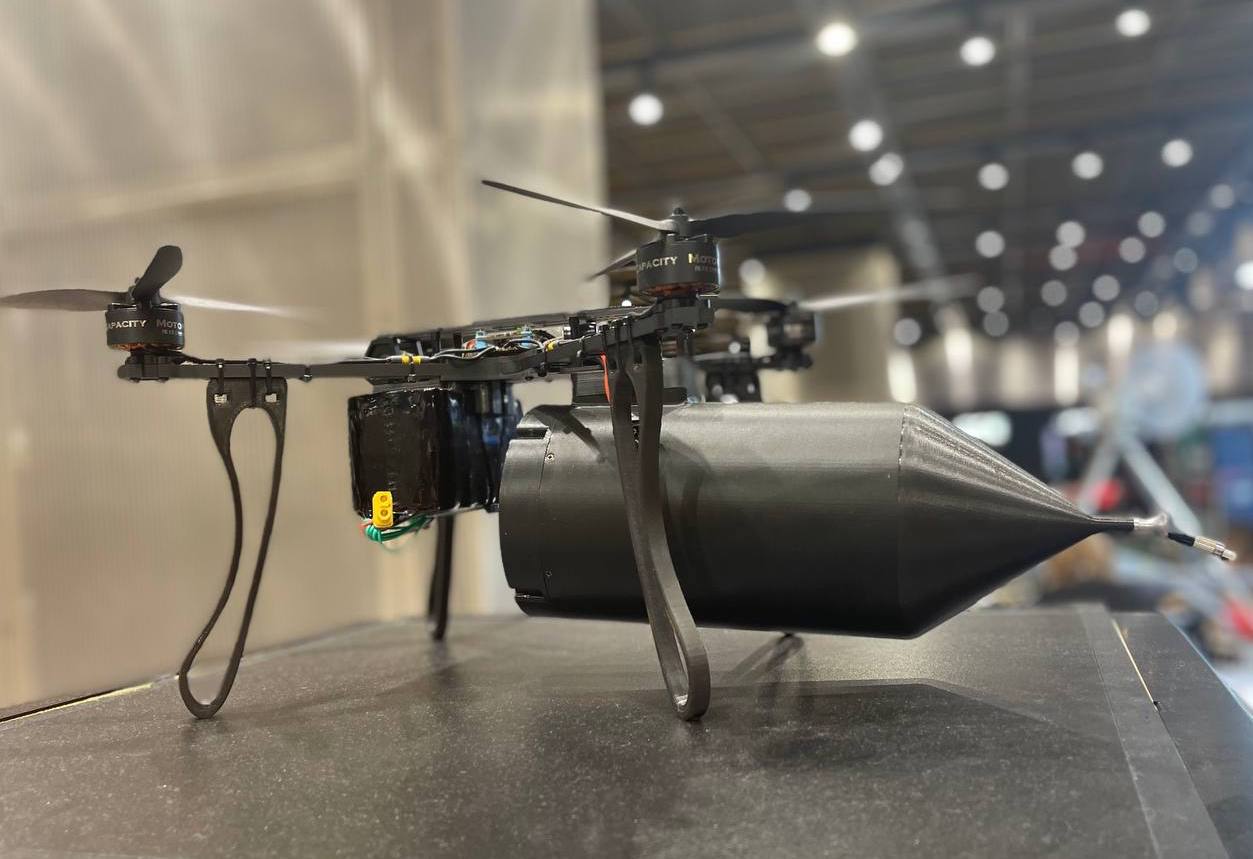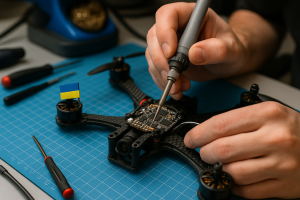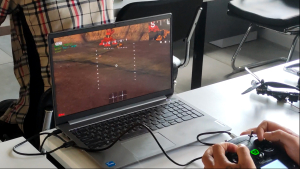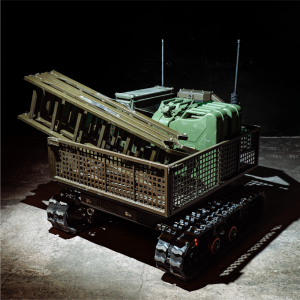With the start of Russia’s full-scale invasion of Ukraine, the war has undergone a technological transformation, with unmanned aerial vehicles (UAVs) playing a key role. FPV drones, loitering munitions, and targeting systems have all reshaped the way combat is conducted. As electronic warfare (EW) has become a powerful tool for disabling enemy drones, a new direction in drone development has emerged — fiber-optic drones.
This technology enables drones to be controlled via a wired connection, making them completely immune to radio interference and signal jamming. The use of fiber optics ensures instant communication with the operator and stable transmission of video and commands, even under the most challenging conditions.
In this article, we’ll explore the advantages, risks, and alternatives to fiber-optic drones, as well as their impact on the modern battlefield. What is the future of this technology? Why is Ukraine lagging behind Russia in mass production? And most importantly — will fiber-optic communication become the standard in future warfare?
What It Is and Why It Matters: Components and Purpose
Fiber-optic drones represent a new frontier in the development of unmanned technology in the context of modern warfare in Ukraine. Instead of relying on traditional radio signals, these drones are controlled via a fiber-optic cable. Here are the key components required to implement this technology:
- Fiber-Optic Communication:
- Lightweight and durable optical fiber wound on a spool.
- An optical modem that converts signals into light pulses and transmits them through the fiber.
- Control System:
- A flight controller adapted for wired control.
- A command transmission interface — since traditional radio receivers are unnecessary, a special module is used for optical-based control.
- Video System:
- FPV camera — a standard digital camera (e.g., DJI, Caddx, Foxeer).
- Video encoder — converts the camera signal for transmission via the fiber-optic cable.
- Video signal processing system — receives and decodes the video feed at the operator’s station.
- Power Supply:
- A standard drone battery.
This type of drone has its own advantages and limitations, but it’s steadily gaining popularity — especially in situations where communication reliability and data security are critical.
History and Development of the Technology
The development of fiber-optic drone technology began back in the 1990s, when military experts and scientists were seeking ways to control unmanned aerial vehicles without the risk of radio signal interception. The first to actively adopt this approach were military units conducting reconnaissance in environments with intense electronic warfare activity. Fiber-optic communication made signal jamming impossible and ensured stable data transmission.
Over time, the technology expanded into civilian applications, particularly for operations in extreme conditions — such as deep-sea exploration, nuclear facility inspections, and monitoring hazardous zones at chemical plants. Thanks to advances in fiber-optic cable design and improved data processing systems, modern fiber-optic drones now offer greater maneuverability, extended operational range, and the ability to function in the most challenging environments.
Today, this technology is being actively integrated into both military and industrial sectors, becoming an indispensable tool for carrying out highly specialized tasks.
Technical Specifications and Advantages
Fiber-optic drones offer several key advantages over their wireless counterparts, the most important being complete immunity to electronic warfare systems. Since these drones emit no radio signal, there is nothing to jam or intercept — making them ideal for reconnaissance and special operations in areas with active electronic countermeasures (ECM).
The maximum operational range of these drones depends on the length of the cable, which typically ranges from a few hundred meters to several dozen kilometers. This type of connection enables drones to operate in challenging environments — such as underwater, in tunnels, or within enclosed spaces.
Another major advantage is real-time data transmission. Thanks to the speed of light in fiber optics, video and control signals are delivered without delay, providing the operator with a clear picture and instant control over the drone. This makes the technology highly effective not only in military operations but also in industrial applications, scientific research, and rescue missions.
Limitations and Risks
Russia was quick to establish mass production of fiber-optic drones and is actively using this technology on the battlefield to target Ukrainian equipment and infantry. Ukrainian engineers, in fact, developed the technology at roughly the same time as their opponents. However, its implementation in Ukraine has been slower and more complicated. Rapid deployment to the front lines was delayed due to the need for testing FPV drones with fiber optics, as well as codification and certification processes in line with international standards. Since this is a new technology, the country had no established procedures for testing or certifying such systems. Yet, without codification, manufacturers cannot receive government contracts, funding, or scale up production.
Despite these challenges, Ukrainian developers are working actively to refine the technology, diversify risk by reducing dependence on Chinese components and mitigating sabotage threats, and set up serial manufacturing.
Alongside their clear advantages, fiber-optic drones also come with some limitations. The main drawbacks are their reliance on the cable, which restricts range and reduces maneuverability in complex environments — as the wire can snag on obstacles and hinder movement. Additionally, the cable can be physically damaged. If it breaks, the drone can instantly lose connection with the operator, become uncontrollable, and crash. To prevent this, manufacturers are adding dual-control systems — via fiber optics and traditional radio — although the latter only functions in areas not affected by electronic warfare. Moreover, producing such drones is significantly more expensive than manufacturing standard FPV models.
A notable drawback for the military is that equipping a drone with a fiber-optic spool requires reducing the weight of the warhead (payload).
Controlling such drones also demands more careful training compared to standard wireless models. The operator must maintain the correct speed to ensure the cable unwinds evenly and maneuver smoothly and cautiously to avoid the wire catching on obstacles. However, modern technology can partially offset these challenges through the use of automatic stabilization systems.
Alternatives and Combined Technologies
Fiber optics are not the only technology that ensures precise drone control and resistance to electronic warfare. An alternative could be modern guidance systems based on inertial sensors and machine vision algorithms. These systems allow the drone to autonomously maintain its course, even when there is no connection with the operator.
“The VGI-9 guidance system can serve as an alternative or a complementary technology to fiber optics. An FPV drone operator equipped with the guidance system can easily fly long distances through areas protected by electronic warfare (EW) systems thanks to the cruise control function. However, it’s essential to clearly understand and know how to use this feature properly,” says the technical director of VGI-9.
Regarding pricing, he notes that fiber optic systems are quite expensive. Moreover, since the technology is still new, many solutions on the market are still “raw” and of low quality.
“Our guidance system is significantly more affordable, has a streamlined production process, and has already been tested and proven by the military in combat conditions,” the technical director adds.

Combining fiber optics with the guidance system also unlocks new possibilities. This combination allows users to take advantage of all the benefits of wired control while ensuring the drone can operate autonomously if the cable breaks or in challenging conditions. This is especially valuable in military operations or reconnaissance missions where stable communication is critical.
VGI-9 CTO on Revolutionizing Drone Targeting in Combat — read here.
In addition, this setup helps increase the accuracy of both stationary and moving target hits by less experienced operators. Reaching a target protected by EW systems is only half the job — hitting it accurately is crucial to ensure all efforts aren’t in vain.
Production and Economic Aspects
Mass production of fiber-optic drones has not yet been established in Ukraine. However, several companies and engineering teams are actively developing and testing such systems. The main challenge lies in integrating fiber-optic communication into the drone’s design while maintaining its maneuverability and ensuring the durability of the cable.
Fiber-optic cables for these drones are mostly imported from Europe, the U.S., and Asia. A common issue is defects in products coming from China. The difficulty here is that defects in the cables are not always detectable through visual inspection or standard testing—they often only become apparent during combat use. At the same time, Ukrainian companies are exploring the possibility of local production or adapting existing solutions to meet military requirements, particularly with a focus on resistance to physical damage.
Fiber-optic drones are more expensive than standard FPV drones due to their more complex control systems, the need for specialized cable, and the higher precision required in manufacturing. The final cost depends on the materials used and the length of the fiber.
In Ukraine, prototypes of fiber-optic drones are being manufactured and tested. Some companies are working with the military and volunteer organizations to adapt the technology for combat conditions and to find the optimal balance between cost, reliability, and performance.
The scale-up of production also depends on government orders and funding. So far, the Ukrainian government has not placed orders for fiber-optic drones from domestic manufacturers, mainly due to the lack of official product codification—a point previously mentioned. However, some companies have already secured contracts for large batches, but funding is still insufficient to launch full-scale production.
Let’s talk about the cost of the technology. The price of a standard FPV drone without fiber optics starts at around 14,000 UAH. A 10 km fiber-optic spool used to cost up to $2,500, but thanks to increased production, the price has dropped to about $150. A media converter costs approximately $25–30.
When a fiber-optic spool and media converter are added to a standard FPV drone, the total cost of the product can range from 40,000 to 70,000 UAH (from 1,000 to 1,800 USD).
For example:
- For example, a 13-inch FPV drone kit equipped with FiberX REAPER “Antireb” fiber optics costs 71,900 UAH.
- The “Khrushch” 13″ FPV drone kit with a 10 km fiber-optic spool costs 40,500 UAH (~1000 USD).
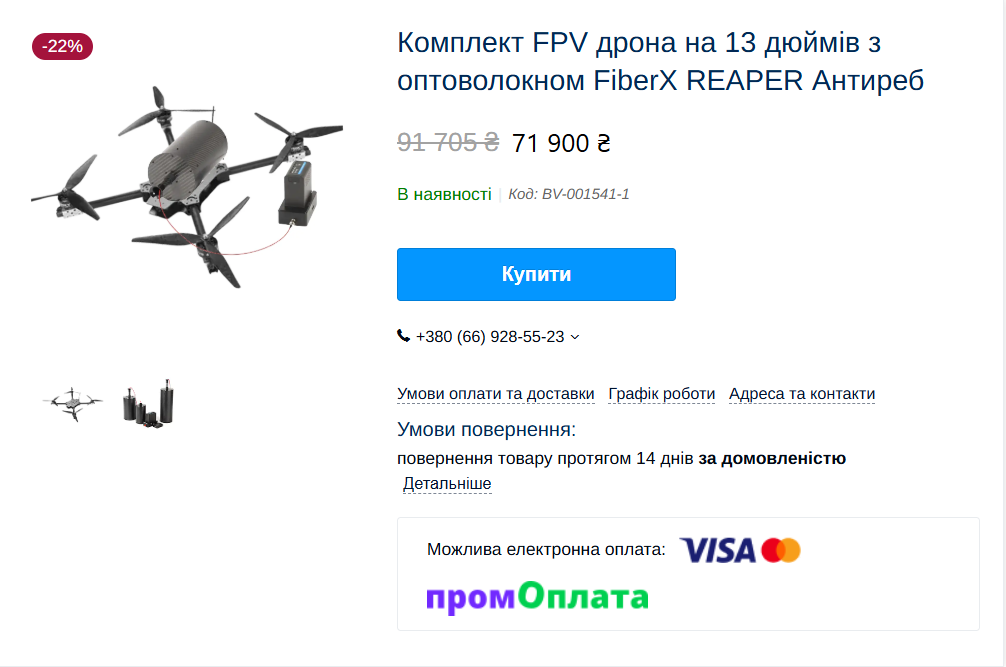
Thus, integrating fiber-optic technology increases the cost of an FPV drone by an average of 12,000 (~500 USD) to 30,000 UAH (~800 USD). However, with the declining prices of components, this difference is becoming less significant, making such drones more accessible for widespread use.
Use in Modern Warfare
Since fiber-optic drones do not rely on radio signals, the only current method of countering them is physical destruction—through anti-aircraft systems, small arms, nets, or the use of laser systems and interceptor drones capable of cutting or damaging the fiber-optic cable.
These drones were first used to attack Ukrainian armored vehicles in early autumn 2024. Large-scale combat use was recorded near Kursk, when the Russian army broke through a Ukrainian defensive line. The enemy carried out precise strikes on key targets despite a strong electronic warfare (EW) system. This demonstrated the effectiveness of the technology and spurred its further development and integration into military strategies.
The widespread use of fiber-optic drones could significantly reshape battlefield tactics, especially under heavy use of EW tools. These drones provide a reliable communication channel, eliminating the risks of signal jamming or control interception. This opens up opportunities for precision strikes, reconnaissance missions, and coordinated attacks in difficult environments where wireless drones often lose effectiveness.
Numerous videos online show enemy fiber-optic drones flying into buildings, vehicles, and even attacking people on the ground, since they are not bound by the radio horizon and can operate at altitudes as low as 2–3 meters.
Commander of the 414th Separate UAV Brigade, Robert Brovdi (call sign “Madyar”), notes that fiber-optic drones are an effective means of stopping Russian assaults:
“When the enemy prepares a mechanized assault, they deploy 5–10 units of equipment equipped with EW systems, and activate an EW strip to suppress all signals and disable our control systems — to prevent us from attacking their moving convoy with drones… In such conditions, fiber-optic drones operate flawlessly, while conventional drones are sidelined.”
He adds that to effectively stop an assault, it is necessary to have 10–20 fiber-optic drones at each position, ready to be used in rapid response and prevent any further advance. According to him, a single unit needs about 1,000 fiber-optic UAVs per month.
What’s Next?
Today, Ukrainian forces are working on adapting fiber-optic drones for combat operations, especially under conditions of intense enemy use of electronic warfare (EW). These drones are being deployed for reconnaissance, artillery targeting, strike correction, and precision attacks on enemy positions, all while maintaining stable communication — even in areas where traditional FPV drones face heavy interference.
The inability to jam or intercept their control allows operators to act without the risk of losing control over the drone. This is particularly critical during strikes on strategic targets such as command centers, ammunition depots, or air defense systems.
Beyond their direct use in combat, Ukrainian engineers and military experts are continuously improving this technology, developing new drone models with enhanced capabilities. They are experimenting with different fiber-optic materials, creating advanced control systems, and looking for optimal ways to increase drone range without sacrificing effectiveness.
Notably, over 15 developers are currently testing their fiber-optic UAVs at a dedicated testing ground organized by the Brave1 cluster. Ukrainian companies are showcasing systems with extended operating ranges—exceeding 20 km. In addition, ground-based robotic platforms using fiber optics are also undergoing testing.
Given the rapid evolution of unmanned technologies, Ukraine is already demonstrating cutting-edge solutions that could shift the balance of power on the battlefield and become a key component of future military strategy. The key factor in this matter is the availability of the necessary resources for further development and large-scale implementation of this technology in military operations.
Contact us to get detailed information about the VGI-9 drone guidance system.
Follow our updates on social media and YouTube – there you will find:
✅ Exclusive materials on the development, testing, and combat use.
✅ Useful analytical content on the war and the role of FPV drones in modern combat operations.
✅ The latest news and insights from the world of military technologies.
📌 Join us:
🔗 YouTube: VGI-9 on YouTube
📸 Instagram: We are on Instagram
🎯 TikTok: We are on TikTok



